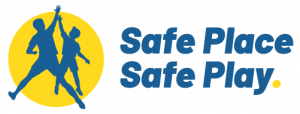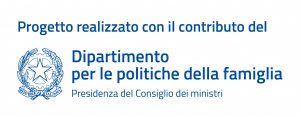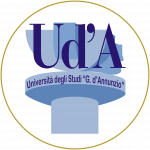The significance and diffusion of sport in young people under 18
The sport is a great value for children and adolescents, as it contributes to the achievement of social, cultural, and political objectives including, for example: social inclusion, education, peace, and social cohesion, reduce youth deviance. Psychological literature has shown that practicing sports since childhood promotes psychomotor and relational development, helping the development of emotional regulation and tolerance to frustration.
In 2017, ISTAT president Giorgio Alleva, explaining the results of the “I Cittadini e il Tempo libero” survey conducted in 2015, highlighted that Italians who practice sports in their free time are more than 20 million. Children under 14 represent one-fifth of all athletes; 6 boys out of 10 and 1 girl out of 2 practice sports continuously. Compared to the past, the average age at which people start practicing sports has decreased. Regarding to the earlier generation, younger generation show higher levels of activity approximately 89% of children ages 3 – 14 are supervised by an instructor or coach.
Sport is not always a safe place
Just a few years ago, it became clear that sports are not always a safe place for young people and that the same types of violence perpetrated in families and communities can occur in the sports context. As Paulo David (Human Rights in Youth Sport: A critical review of children’s rights in competitive sports, 2005) argues about young athletes in Article 29 of the Convention on the Rights of the Child, coaches, volunteers, and professionals working in sports are required to guarantee that sport is played in a culture of comprehension, peace, tolerance, gender equality, friendship and fair play among all persons involved. The Convention on the Rights of the Child, in article 31, affirms that member states recognize the right of the child to rest and free time, to engage in play and entertainment activities appropriate to their age and to participate freely in cultural and artistic life. States shall respect and promote the right of the child to participate fully in cultural and artistic life and shall encourage, on equal terms, recreational, artistic, and cultural activities.
EU White Paper on Sport makes explicit that child sexual abuse and harassment in sport must be fought. The Commission expressed its intention to propose to Member States and sports organizations to cooperate in the protection of young people’s moral and physical integrity through the diffusion of information on current legislation, the definition of minimum standards and the exchange of best practices (4.5 Protection of minors White Paper on Sport – COM (2007) 391 final).
Human rights and child protection associations and sports communities have only recently undertaken shared projects. The need to develop a framework on human rights and antiviolence in sport is recently emerging and it is being promoted internationally.
Project implementation area
The project will be carried out in Abruzzo, where the child maltreatment phenomenon is still undetected, and the presence of protective services is low. The CESVI survey (Regional Index on Child Maltreatment – 2018 and 2019) shows that Abruzzo is ranked 15th among regions for the presence of risk factors and services for maltreatment. These data concern the child abuse phenomenon in general because there are no specific estimates, in Italy and in the different regions, regarding child abuse in the sport context. UNICEF’s report, PROTECTING CHILDREN FROM VIOLENCE IN SPORT (2010), failed to estimate violence against children in the sport settings.
The Safe Place Safe Play project will be realized through a close synergy between: the University G. D’Annunzio and two associations that have been working for years in the field of child abuse protection, with the support of CONI Abruzzo, Juvenile Court of L’Aquila, the Department of Health, Family and Equal Opportunities, the Department of Social Policy and the Order of Psychologists of Abruzzo.
The Abruzzo region doesn’t present significant actions in this context and this lack is, unfortunately, in line with what happens in the national panorama. In 2010, Unicef published the report “Protecting children from violence in sport” which illustrates the main results of an international survey designed to define the various forms of violence against children in sport, their prevalence, and the initiatives in place to fight them up to 2007. The research has defined several aspects of the phenomenon and has provided valuable indications for sports organizations. Few prevalence studies were found, carried out with different methodologies that don’t allow meaningful estimates of the phenomenon, and limited initiatives carried out until then only in Australia, England, Canada, and the United States. In its conclusion, the report recommends:
According to the authors of the survey, implementation of these actions will achieve significant improvements in the promotion and protection of children’s rights in sport.
In 2014, the EU Council invited the European Commission to conduct a study to assess the nature and extent of gender – based violence in sport (Council Conclusions on Gender Equality in Sport18). In 2015, the Education, Audiovisual and Culture Executive Agency (EACEA) commissioned Yellow Window to conduct this study in order to increase knowledge about gender – based violence in sport across the EU and improve European policy in this area. The study involved 28 EU member countries and included in gender – based violence also various forms of child abuse. The results of this other survey have highlighted the presence in Italy of an adequate regulatory system for the protection of children, which can also be extended to the field of sports, testifying to the numerous efforts made by the Italian government. On the other hand, a few critical points have emerged in our country with actions aimed at contrasting and preventing violence against minors in the sports context. For example, there is no evidence – based policy document or code of conduct shared and disseminated at the national level that contains not only guidelines on child abuse in sports, but also indications on prevention strategies, risk reduction and long – term resolution of the phenomenon.
On February 13, 2021, the technical panel set up by the Department for Sport of the Presidency of the Council of Ministers was established. It will elaborate a code of ethics and collaborate in its diffusion and integration throughout the territory. The goal of this initiative is to guarantee that all young athletes, without distinction or discrimination, can practice sport safely, in a healthy and safe environment. In short, in Italy and in Abruzzo, there is a great need to develop adequate policies aimed at preventing and fighting violence against minors in the field of sports.
Various forms of abuse in sport
International Olympic Committee consensus statement: harassment and abuse (non-accidental violence) in sport (2016) identifies multiple forms of child abuse, including:
The athlete – coach relationship, especially in a very young age range, is characterized by admiration and trust from children. Parents also trust coaches a great deal, as they entrust their children, often for many hours a week, to other adults. The sports environment is based
a circle of trust that includes family, instructors/coaches, and children. This type of relationship can be both a potential factor of protection, when the child is in difficulty, and a risk factor when the trust relationship is used to perpetrate improper approaches and abuse of weak subjects.
Abuse Consequences
The kinds of violence and physical and emotional abuse perpetrated in the sports environment can have serious consequences. About body, e.g.:
On the other hand, about the effects on minors’ psyches, possible consequences can be:
Abuse in sports has negative repercussions not only on the victims, but also on the same associations and sports clubs that suffer great losses in terms of visibility and supporters, membership, sponsors and profits, credibility and trust by members and the sporting environment. It’s probably for these reasons that when critical events occur, managers often prefer to handle the situation privately and silently.
Outcome of the Council and the Representatives of the Governments of the Member States, meeting in Council, on the protection of minors in sport (2019/C 419/01)
THE COUNCIL AND THE REPRESENTATIVES OF THE GOVERNMENTS OF THE MEMBER STATES, MEETING IN COUNCIL, RECOGNIZING THE FOLLOWING:
INVITE THE SPORT MOVEMENT TO:
Recent news on the subject of violence in sports
In the Italian sports context, concrete initiatives have recently been taken to implement the most recent guidelines of the International Olympic Committee (I.O.C.) regarding “safeguarding policies” that are also finding practical application abroad. The C. I. O.’s objective, because of the international scandals that have recently emerged, has been to strengthen support for athletes through significant actions aimed at their protection, adopting policies and procedures aimed at:
The “Safeguarding Policy” adopted by the C.I.O. and taken as a guideline, aims to provide a solution to the need to fight degenerative phenomena that should not find space or tolerance in the sporting environment.
The policy codifies actions and behaviors designed to promote the wellbeing of all those in the sporting world (athletes, coaches, managers, and operators) and to protect athletes from abuse and maltreatment by preventing harmful health consequences.
The strategy to develop a successful safeguards policy must include:
Power imbalance in the coach – athlete relationship
A power imbalance occurs whenever one person has supervisory, evaluative, or other authority over another. In the relationship between athlete and coach this imbalance should be always assumed.
In the coach – athletes’ relationship it is important to clearly define prohibited or contraindicated conduct, some of them may not necessarily constitute a disciplinary and/or criminal violation, but that it becomes so from the moment that participation in the world of sports is a privilege.
Some prohibited or contraindicated conduct likely to affect free membership in the sport are:
Be a part of making change and protecting your young athletes
In our project we will create a code of ethics and conduct and a policy document regarding child abuse in sports.
Expert referrals from the Safe Place Safe Play project network will be responsible for drafting a code of ethics and conduct and policy document, with the following purposes:
According to international experience, the ethical code represents a tool to raise standards of safety and behavior, as well as make explicit the shared values and spirit of sport, in line with the requirements of the Convention on the Children’s Rights.
The objectives of the ethics and conduct code are:
The policy document aims to outline actions to prevent and contrast violence and abuse against children in sports. These actions have different implementation methods depending on the role covered.
The sports executives will have to:
(1) Promote the Ethics and Conduct Code and act against those who don’t respect it, (2) Provide both physical and psychological support to victims, (3) Promote, with the assistance of experts, educational programs regarding appropriate behaviors and risk factors, (4) Involve parents, caregivers, operators and athletes in the promotion of safety and wellness in sports by maintaining a (5) multidisciplinary approach by involving other professional types in the execution of prevention programs.
The policy, regarding athletes, proposes that they be aware of their rights and how to ask for help, but especially that they be supportive of their teammates, helping them to report to management and seek help for any violence they may have suffered.
The document will provide information regarding the recognition of elements that coaches must learn to recognize in their young athletes and to respond effectively and timely. The document will contain contacts of experts who can be contacted for help and support in dealing with critical situations.
To ensure greater usability for parents, children, and adolescents, we plan to create an informative brochure that will be distributed in the awareness activities that we will carry out directly in the fields of sports clubs. The brochure will contain summary information with respect to the Ethics and Conduct Code and the Policy document.




